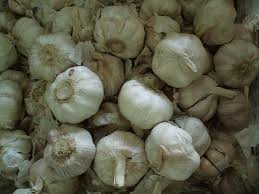scientific name Allium sativum

is a low herb, which only grows up to sixty centimeters high. Its leaves are flat and linear, with bulbs that consist of several tubers. This herb is one of the most widely used herbal medicines in the Philippines and can also be found commonly in the kitchen of Filipino households as it is used to spice up food preparations. The Philippine bawang or garlic variety is more pungent than the imported ones. Its medicinal properties have been known for a long time and have been especially proven during World War II when it was used to treat wounds and infections of soldiers. Garlic’s antibacterial compound known as allicin, saved many lives of the soldiers as this property prevented the wounds from being infected and developing into gangrene at a later stage by extracting the juice of bawang or garlic and applying to the wounds.
Bawang, sometimes spelled as bauang or in English, garlic is known as nature's antibiotic. Its juices inhibit the growth of fungi and viruses thus, prevent viral, yeast, and infections. The preliminary test conducted on this medicinal herb showed some positive results in the treatment of AIDS. Several clinical tests that followed and published studies have shown the efficacy of garlic in lowering cholesterol in the blood and is beneficial to the circulatory system of the body. Today, as more research is done on garlic, more medicinal and therapeutic properties become more evident. As of the present time, lowering of the blood pressure, reduction of platelet aggregation, and the boosting of fibrinolytic activities are among the list of herbal functions of garlic, which is supported by medical findings. Although more clinical studies are needed to support the contention stronger, marked improvements in benign breast diseases have been traced to make progress because of the regular intake of supplements, of which the primary ingredient is garlic.
Although controlled trials in terms of anti-cancer activities of garlic have been performed in medical research, it has been proven through population-based studies that substances contain in garlic help in reducing the risk of some types of cancer. These would include colorectal malignancies, and gastric cancer. Regular consumption of raw garlic has been proven to aid in many bleeding cases, especially those cases that are associated with procedures in surgeries and dental activities. All these considered, it appears that garlic have no concrete scientific basis to claim a significant effect in the level of glucose in our blood. It is remarkable to note though that the Philippine Department of Health has endorsed garlic as one of the top ten Philippine herbs with therapeutic value and the department recommends its use as an alternative herbal medicine in view of the positive results of thorough research and testing, which had been conducted on this herbal plant. Juice extracted from garlic bulbs can be used as tick and mosquito repellant when applied to skin.
Bad breath, due to the strong odor of garlic, is the most common side effect of taking this herb. Fresh garlic applications to the skin have been reported to cause skin burns and rashes. This goes true both for those who are in the initial stages of their garlic therapies, and those who consume it as an ingredient in food preparations.









